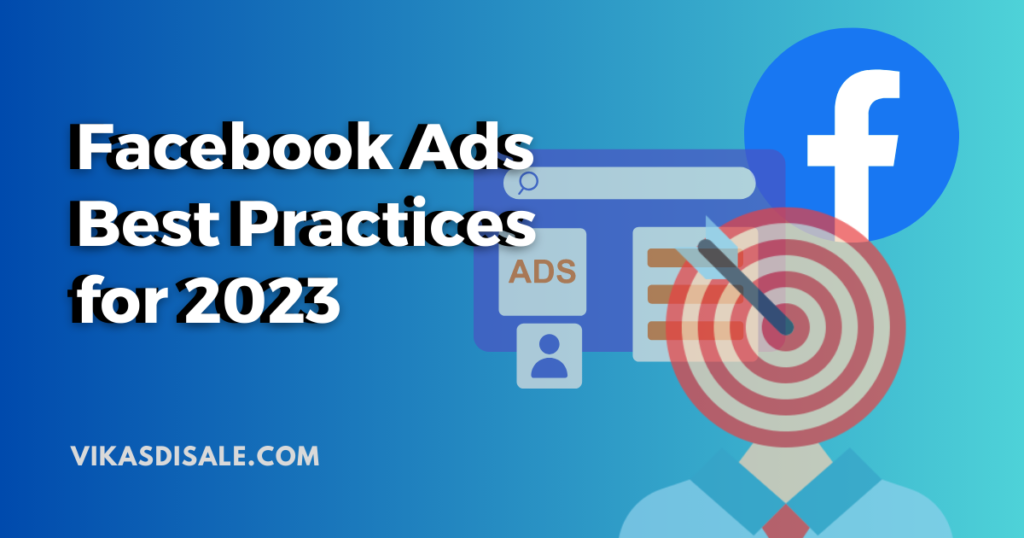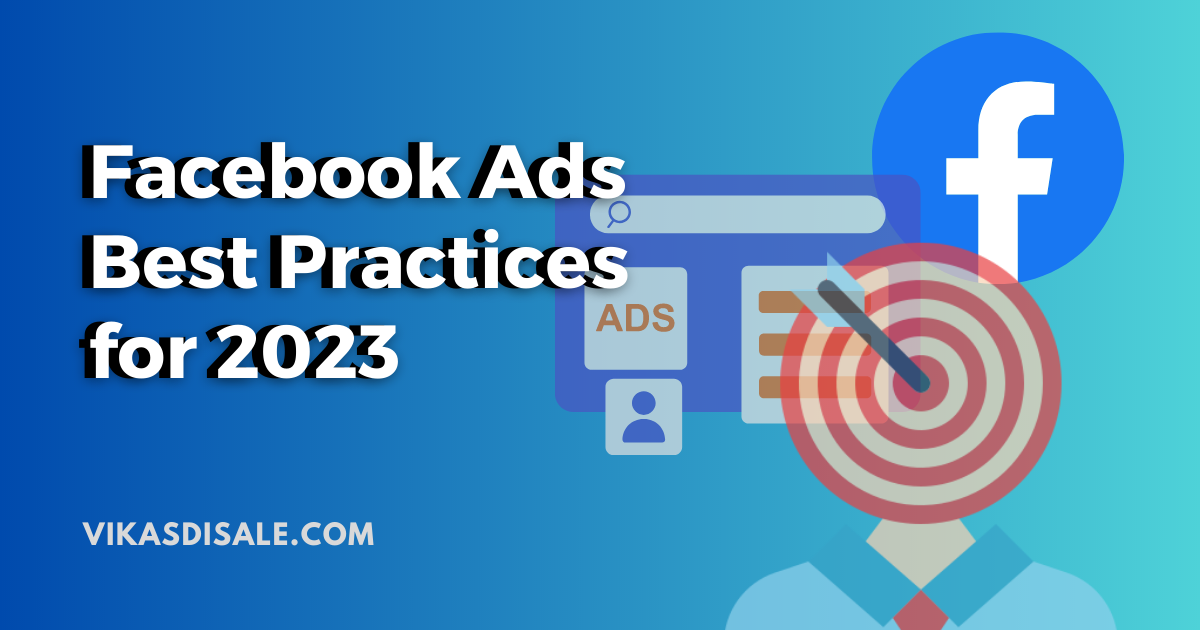
In the world of digital marketing, Facebook ads have become a powerful tool for businesses to reach their target audience. Facebook has 2.93 billion monthly active users, out of this 67.5% of monthly users are active daily. With its extensive user base and advanced targeting options, Facebook offers a unique opportunity to connect with potential customers.
However, running successful Facebook ad campaigns requires careful planning and execution
Why advertise on Facebook?
- Wide reach to billions of active users worldwide
- Advanced targeting options for reaching specific demographics, interests, and behaviors
- Cost-effective compared to traditional advertising methods
- Diverse ad formats (images, videos, carousels) for effective communication
- Real-time tracking and measurement of campaign performance
- Retargeting capabilities to re-engage with previous website visitors or customers
- Mobile-friendly ads to reach users on smartphones and tablets
- Customizable campaigns to align with branding and messaging
- Social proof and engagement opportunities through user interactions
- Ongoing optimization based on real-time data and testing
These benefits make Facebook ads a valuable tool for businesses to increase brand visibility, reach their target audience, and achieve their marketing goals.
Types of Facebook Ads
Facebook, with its massive user base and extensive reach, has become a powerful advertising platform for businesses of all sizes. By leveraging the different types of Facebook ads, marketers can effectively target their desired audience and achieve their advertising goals.
Carousel Ads
Carousel ads allow advertisers to showcase multiple images or videos within a single ad unit. Users can swipe through the carousel to view different products, features, or offers.
This type of ad format is effective in telling a story, highlighting different aspects of a product, or showcasing a range of offerings.
Image Ads
Image ads are simple yet powerful. They consist of a single image accompanied by ad copy and a call-to-action button. Marketers can choose visually compelling images that grab attention and effectively convey their message.
Image ads are an excellent choice for increasing brand awareness or promoting specific products or services.
Video Ads
Video ads are engaging and highly effective in capturing the audience’s attention. They can be in the form of short videos or longer narratives, depending on the advertising objective.
Video ads allow businesses to showcase their products, share customer testimonials, or create captivating brand stories.
Slideshow Ads
Slideshow ads are a cost-effective alternative to video ads. They use a series of images or a combination of images and videos to create a dynamic ad experience. \
Slideshow ads are particularly useful for businesses operating in areas with limited internet connectivity or targeting audiences with slower internet speeds.
Collection Ads
Collection ads combine a cover image or video with several product images below. When users click on the ad, they are presented with an immersive, full-screen experience that showcases the featured products.
Collection ads are great for promoting e-commerce products and driving conversions.
Instant Experience Ads
Formerly known as Canvas ads, Instant Experience ads offer a full-screen, interactive experience that engages users. Advertisers can use a combination of images, videos, carousels, and other interactive elements to tell a compelling brand story and drive user engagement.
Lead Ads
Lead ads are designed to capture user information directly within the Facebook platform. When users click on the ad, a pre-populated lead form appears, making it easier for them to submit their details.
Lead ads are effective for generating leads, such as newsletter sign-ups, event registrations, or inquiries.
Dynamic Ads
Dynamic ads are personalized advertisements that automatically show relevant products or offers to users based on their past interactions with a brand.
This type of ad is highly effective for remarketing and upselling to existing customers or displaying products related to a user’s previous purchases or browsing history.
Messenger Ads
Messenger ads appear directly in users’ Facebook Messenger inbox. Advertisers can leverage Messenger ads to start conversations, answer customer queries, or promote products or services. This type of ad facilitates direct interaction with potential customers, leading to increased engagement and conversions.
Event Response Ads
Event response ads are specifically designed to promote events. They include event details, such as the date, time, and location, and allow users to RSVP directly within the ad. Event response ads are effective in driving event registrations and attendance.
Offer Ads
Offer ads allow businesses to create and promote discounts, deals, or special offers. Users can claim the offer directly from the ad, either online or in-store. Offer ads are a great way to attract new customers, increase sales, and create a sense of urgency.
Sponsored Mentions
Sponsored mentions are a type of influencer marketing on Facebook. Brands collaborate with influential individuals who share sponsored content with their followers. These sponsored mentions help expand the brand’s reach, build credibility, and tap into the influencer’s engaged audience.
Setting up Facebook ads
Here is a step-by-step guide to help you get started:
Create a Facebook Business Page:
If you don’t have one already, create a Facebook Business Page for your business. This will serve as the foundation for your ad campaigns.
Set Up an Ad Account:
Access Facebook Ads Manager and set up an ad account. This account will manage your ad campaigns and payment methods.
Define Your Advertising Objective:
Determine the objective of your ad campaign. Facebook offers various objectives such as brand awareness, traffic, conversions, or engagement. Choose the objective that aligns with your goals.
Identify Your Target Audience:
Define your target audience based on demographics, interests, behaviors, and other relevant factors. Facebook’s targeting options allow you to reach specific groups of people who are most likely to be interested in your products or services.
Choose Ad Placement:
Select the platforms where you want your ads to appear. Facebook offers options such as Facebook News Feed, Instagram, Messenger, and Audience Network. Consider your audience and campaign goals when choosing the placements.
Set Your Budget and Schedule:
Carefully plan your ad budget to ensure optimal allocation of resources. Understand the different bidding strategies available on Facebook, such as cost per click (CPC), cost per thousand impressions (CPM), or cost per action (CPA). Experiment with different bidding options and optimize based on the results to maximize your return on investment (ROI).
Select Ad Format:
Facebook offers a range of ad formats, each serving different purposes. Whether it’s a single image ad, video ad, carousel ad, or collection ad, select the format that aligns with your campaign objectives and resonates with your target audience. Consider the visual and storytelling elements that will make your ad stand out.
Create Compelling Ad Copy:
Craft persuasive and compelling ad copy that highlights the value of your products or services. Keep the text concise and impactful, focusing on key benefits or offers. Include a clear call-to-action to prompt user action.
Design Eye-Catching Visuals:
Visuals are essential for grabbing the audience’s attention. Invest in high-quality images or videos that align with your brand’s aesthetics and evoke emotions. Ensure that the visuals are relevant to the ad’s message and encourage viewers to stop scrolling and engage with your content.
Set Up Tracking and Conversion Pixels:
Facebook Pixel is a powerful tool that allows you to track conversions, optimize ad delivery, and build custom audiences. Install Facebook Pixel on your website to gain valuable insights into user behavior, retarget website visitors, and measure the effectiveness of your Facebook ads.
Review and Launch:
Double-check your ad settings, targeting, budget, and creative elements. Once you are satisfied, click the “Publish” or “Launch” button to set your campaign live.
Monitor and Optimize:
Regularly monitor the performance of your ad campaigns using Facebook Ads Manager. Analyze key metrics such as impressions, clicks, conversions, and engagement. Make data-driven optimizations to improve your campaign’s effectiveness.
Mobile Optimization
Given the increasing usage of mobile devices, it’s crucial to optimize your Facebook ads for mobile viewing. Ensure that your ad visuals and copy are easily readable on smaller screens. Test your ads on various mobile devices and make necessary adjustments to enhance the mobile user experience.
Remember to continuously test different ad elements, refine your targeting, and adjust your budget and bidding strategies based on the results. By following these steps and consistently optimizing your campaigns, you can run successful Facebook ad campaigns that reach your target audience and achieve your marketing objectives.
Conclusion
Setting up effective Facebook ad campaigns requires careful planning and implementation. By following the steps outlined in this guide and continuously monitoring and optimizing your campaigns, you can maximize the return on your Facebook ad investment and stay ahead in the ever-evolving world of digital advertising.
Stay informed about Facebook advertising trends, measure your ad performance, and adapt your strategies to achieve the best possible results
Vikas Disale is Digital Marketer and practicing SEO, Social Media, Paid Ads since 2011. Vikas like to share his knowledge via Podcast, YouTube videos.
